-
2018-09-12150碟子
-
2018-09-13一次性环保餐具-碟子
-
2018-09-14一次性可降解餐具-270ml碗
-
2018-09-14一次性餐具-叉子
-
2018-09-14环保餐盒
一次性玉米淀粉餐具和PLA完全降解餐具有什么区别?
一次性玉米淀粉餐具材质的主要成分为淀粉含量大于45%的淀粉PP混合料。具有成本低,不影响传统塑料的强度韧性,符合现行的食品标准,减少碳排放,节约石油资源等优点。
The main ingredient of disposable corn starch tableware material is starch PP mixture with starch content more than 45%. The utility model has the advantages of low cost, no influence on the strength and toughness of traditional plastics, conforming to the current food safety standards, reducing carbon emissions and saving oil resources.
因淀粉是物理改性,置于潮湿环境会引起发霉等问题,所以玉米淀粉材质大多用于一次性制品,如一次性餐具,保鲜膜,垃圾袋等。
Because starch is a physical modification, it can cause mildew in humid environment, so the material of corn starch is mostly used in disposable products, such as disposable tableware, fresh-keeping film, garbage bags, etc.
就焚烧处理方式而言,生物基原料如淀粉秸秆等,来源于植物,所以使用生物基产品可以减少对CO2对大气排放的影响。所以在产品具备其使用性能的同时,增加生物基的含量,对环境的影响小,对不可资源的依赖越小。但是,单纯从处理方式来考虑对环境的影响是片面的,需要考虑其原料到制品对水电等资源的消耗或者产生的环境污染,从而来整体判断某种材质的优性。
As far as incineration treatment is concerned, biomass materials such as starch straw are derived from plants, so the use of biomass products can reduce the impact of CO2 on atmospheric emissions. Therefore, while the product has its performance, increasing the content of biological base will have less impact on the environment and less dependence on non-resources. However, it is one-sided to consider the environmental impact only from the way of treatment. It is necessary to consider the consumption of water and electricity resources or the environmental pollution caused by the raw materials and products, so as to judge the overall superiority of a certain material.
从环保角度和资源节约角度评价,要从整体生命周期来看,即从原料到制品,制品使用后的垃圾处理。资源消耗方面,主要为原料的成分,电力消耗使用的石化资源。环境方面,电力消耗的石化资源以及焚烧处理排放的CO2等温室效应气体,以及污水废弃排放。
From the point of view of environmental protection and non-renewable resources conservation, we should evaluate the whole life cycle, that is, from raw materials to products, waste disposal after the use of products. In terms of resource consumption, petrochemical resources are mainly used in the composition of raw materials and power consumption. In terms of environment, fossil resources consumed by electricity, greenhouse gases such as CO2 from incineration treatment, and wastewater discharge.
生物基制品,资源消耗方面,它的原料部分为淀粉,对粮食的利用率高,制程简单,所以成本也占有很大的优势。对比传统石油基塑料,一定程度上节约石化资源。环境方面,所产生的垃处理方式主要是分离处理,石油基塑料回收,淀粉部分堆肥处理,对环境影响小。但是实际情况中大多数为填埋或者焚烧。焚烧主要的污染为石油基部分的产生的额外增加到大气中CO2,但是可以进行能源回收。如果处理方式为填埋,通过淀粉的生物降解而致使整个材料物理性能崩溃,但这种“崩溃”后剩余的部分PP还是会残留在土壤中,长时间占据空间资源。
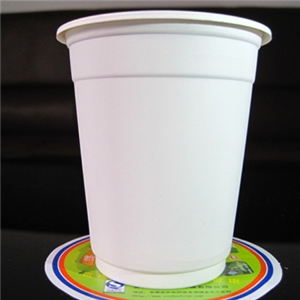

Bio-based products, resource consumption, its raw material part is starch, high utilization of grain, simple process, so the cost also has a great advantage. Compared with traditional petroleum-based plastics, petrochemical resources can be saved to a certain extent. In the aspect of environment, the main waste disposal methods are separation, recovery of petroleum-based plastics and composting of starch, which have little impact on the environment. But in reality, most of them are landfill or incineration. The main pollution from incineration is the extra CO2 generated from petroleum-based components, which can be recovered from energy sources. If the treatment method is landfill, the physical properties of the whole material will collapse due to the biodegradation of starch, but the remaining part of PP after this "collapse" will remain in the soil and occupy space resources for a long time.
从一次性餐具而言,因为食物重油重调料,而一次性餐具受残留食物的污染,所以导致其回收难或者不具备回收价值,食物混合堆肥对土壤影响大。所以实际处理中多为填埋和焚烧。以焚烧方式为例,对比以上两种材质,PLA的优点为节约大部分石化资源,减少对环境CO2的排放,缺点是成本高,浪费粮食。玉米淀粉的优点为成本低,部分节约石化资源和较少CO2温室效应的气体对大气的排放。缺点是石油基组成部分仍然会对环境造成一定的污染。以填埋方式为例,PLA的优点是节约大部分石化资源,缺点是成本高,浪费粮食资源,不易降解,仍然无法解决对空间的长时间占用问题。玉米淀粉的优点是节约部分石化资源,可部分崩溃降解较少土地占用问题,成本低。缺点是石油基组成部分仍然造成对环境的空间占用问题。
As far as disposable tableware is concerned, because Chinese food is heavily oily and seasoned, and disposable tableware is contaminated by residual food, it is difficult to recycle or has no recycling value. Food composting has a great impact on soil. So the actual treatment is mostly landfill and incineration. Taking incineration as an example, compared with the above two materials, PLA has the advantages of saving most petrochemical resources and reducing CO2 emissions to the environment, but its disadvantages are high cost and waste of grain. Corn starch has the advantages of low cost, partial saving of petrochemical resources and less CO2 greenhouse gas emissions to the atmosphere. The disadvantage is that petroleum-based components still cause some pollution to the environment. Taking landfill as an example, PLA has the advantage of saving most petrochemical resources, but its disadvantage is high cost, wasting food resources, not easy to degrade, and still unable to solve the problem of long-term space occupation. Corn starch has the advantages of saving part of petrochemical resources, partially collapsed and degraded, less land occupation and low cost. The disadvantage is that the petroleum-based components still cause space occupancy for the environment.
今天的精彩内容就暂且给大家介绍到这里了,一次性玉米淀粉餐具的小编十分欢迎欢迎大家给我们留言评论:https://www.qiluxinke.com
Today's highlights will be introduced here for the time being. The small edition of disposable corn starch tableware welcomes you to leave us a message and comment: https://www.qiluxinke.com.
- 上一个: 如何为宝宝选择健康的餐具?
- 下一个: 一次性便当餐盒的正确使用方法!
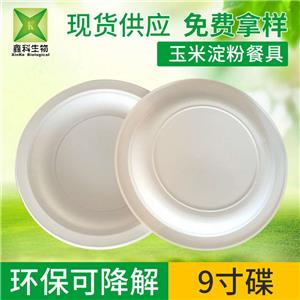 150碟子
150碟子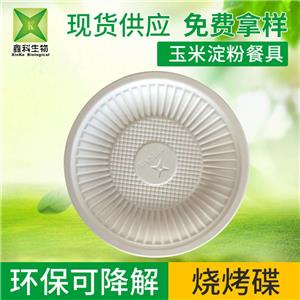 一次性环保餐具-...
一次性环保餐具-...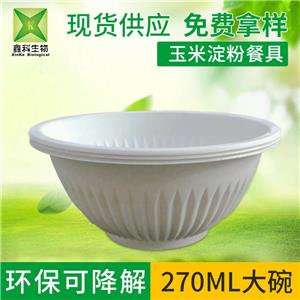 一次性可降解餐具...
一次性可降解餐具...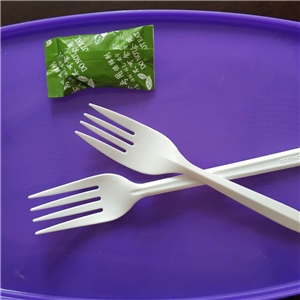 一次性餐具-叉子
一次性餐具-叉子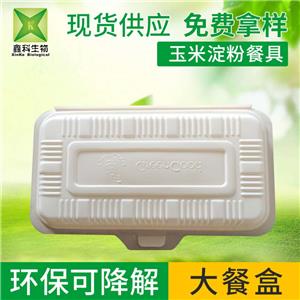 环保餐盒
环保餐盒
相关产品:





